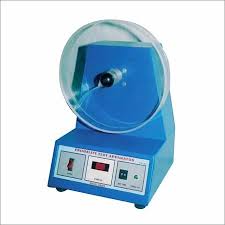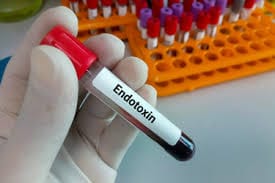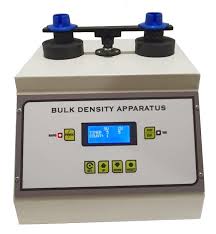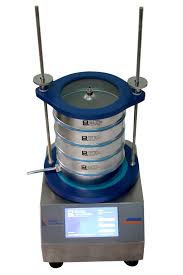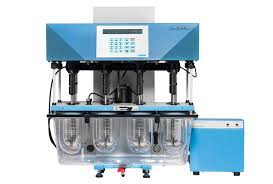|
Getting your Trinity Audio player ready... |
Q4B Annex 9(R1) Tablet Friability General Chapter
1. Introduction: Tablet Friability
Tablet Friability: This document is part of the Q4B initiative, which is aimed at harmonizing pharmacopoeial standards internationally, specifically for the Tablet Friability General Chapter. This particular annex presents the outcome of the Q4B process concerning the assessment and evaluation of various pharmacopoeial texts related to tablet friability. The content and proposals provided within this annex have been submitted by the Pharmacopoeial Discussion Group (PDG), a body that facilitates the collaborative effort of pharmacopoeias from different regions. The goal of this annex is to establish an internationally recognized set of criteria that allows for greater consistency and interchangeability of analytical methods for tablet friability, facilitating smoother regulatory processes across different regions.
2. Q4B Outcome
2.1 Analytical Procedures
The International Council for Harmonisation (ICH) Steering Committee, following an extensive evaluation conducted by the Q4B Expert Working Group (EWG), has concluded that the tablet friability methods detailed in the official pharmacopoeial texts can be used interchangeably in the ICH regions. The three pharmacopoeial references that form the basis for this conclusion include:
- European Pharmacopoeia (Ph. Eur.): Chapter 2.9.7, titled Friability of Uncoated Tablets.
- Japanese Pharmacopoeia (JP): General Information 26, which outlines the Tablet Friability Test.
- United States Pharmacopeia (USP): Section <1216>, which describes the Tablet Friability test.
These references outline the testing procedures for assessing the friability, or breakability, of uncoated tablets, which is a critical quality attribute in tablet formulation and production. The aim is to ensure that the tablets can withstand mechanical stresses during handling, transportation, and packaging without breaking or crumbling excessively.
2.2 Acceptance Criteria
For these methods to be interchangeable, certain acceptance criteria must be met. Specifically, when performing a single determination of tablet friability, the loss of mass should not exceed 1.0%. If three separate determinations are conducted, the average mass loss for all three tests should not surpass 1.0%, unless the regulatory dossier specifies otherwise. This threshold ensures that the tablets maintain sufficient structural integrity and are not prone to breakage under standard conditions.
3. Timing of Annex Implementation
The implementation of this annex, which is a part of the broader regulatory process under ICH Step 5, varies by region. When this annex is incorporated into a region’s regulatory framework, the specified procedures and criteria can be adopted and applied. However, the timeline for this incorporation is not uniform and will differ across different jurisdictions. The relevant authorities in each region will determine the specific timeframes for implementing the annex and its associated procedures.
4. Considerations for Implementation
The implementation of the Q4B annex involves several considerations that manufacturers and regulatory authorities need to address to ensure a smooth transition. These considerations are specific to different regions and involve the adoption of harmonized methods for tablet friability testing.
4.1 General Consideration
Manufacturers or sponsors who are changing their existing tablet friability testing methods to align with the newly evaluated pharmacopoeial methods referenced in Section 2.1 of this annex should follow the appropriate regulatory procedures. Any required notifications, variations, or prior approval processes should be handled in line with the regional regulatory mechanisms that govern compendial changes. This ensures that any updates to testing procedures are recognized and accepted within the respective markets.
4.2 FDA Consideration
In the United States, the Food and Drug Administration (FDA) may require companies to demonstrate that the selected friability test method is suitable and appropriate for the specific materials or products being tested, regardless of the origin of the method. Even though the pharmacopoeial texts referenced in Section 2.1 are considered interchangeable, the FDA may still request additional validation or justification to confirm that the method meets the required standards for the product being manufactured. Therefore, manufacturers must ensure that their chosen methods are applicable to their specific product formulations.
4.3 EU Consideration
In the European Union, regulatory authorities can accept the use of a pharmacopoeial text from a different region (such as the Ph. Eur., JP, or USP) in a marketing authorization application, renewal, or variation application. As long as the application adheres to the conditions specified in this annex, the chosen text can fulfill the requirements of Ph. Eur. Chapter 2.9.7 on Friability of Uncoated Tablets. This flexibility allows companies to reference the methodologies from another pharmacopoeia without needing to revalidate the test under European guidelines, as long as the declaration of interchangeability is provided.
4.4 MHLW Consideration
For Japan, the Ministry of Health, Labour and Welfare (MHLW) will provide specific implementation guidelines once the annex is officially incorporated into the regulatory process. The pharmacopoeial texts outlined in Section 2.1 of this annex can be used interchangeably, but the MHLW will notify stakeholders of any additional requirements or procedures that must be followed. This ensures that the transition to the harmonized testing methods aligns with Japan’s national regulatory framework.
4.5 Health Canada Consideration
In Canada, the regulatory authorities will accept any of the pharmacopoeial texts referenced in Section 2.1 of this annex, provided they are used according to the conditions set forth in the document. This allows manufacturers to use the applicable methods from the Ph. Eur., JP, or USP as interchangeable, streamlining the approval process for products entering the Canadian market.
5. References Used for the Q4B Evaluation
The following references were crucial to the Q4B evaluation process, supporting the development of this annex and ensuring that the selected pharmacopoeial texts meet the necessary quality standards.
5.1 The PDG Stage 5B Sign-off Document
One of the key sources for the Q4B evaluation is the PDG Stage 5B sign-off document, which was published in the Japanese Pharmacopoeial Forum, Volume 14, Issue 1, in March 2005. This document outlines the discussions and decisions made during the PDG’s evaluation process, leading to the harmonization of methods for tablet friability testing across different pharmacopoeias.
5.2 Pharmacopoeial References for Tablet Friability
The specific pharmacopoeial references that were used for this annex include the following:
- European Pharmacopoeia (Ph. Eur.): Supplement 6.6, published in June 2009 and made official in January 2010, which includes Chapter 2.9.7 on the Friability of Uncoated Tablets (reference 01/2010:20907).
- Japanese Pharmacopoeia (JP): General Information 26, which covers the Tablet Friability Test as described in the JP Fifteenth Edition (March 31, 2006). The Ministry of Health, Labour and Welfare issued Ministerial Notification No. 285 to update this chapter. Additionally, errata published by the MHLW on November 5, 2008, further clarified aspects of the test method.
- United States Pharmacopeia (USP): Section <1216>, which describes the Tablet Friability test, was officially included in USP 32, published on May 1, 2009. This section outlines the specific test procedures for tablet friability in the United States and forms the basis of the interchangeability agreement.
6. Conclusion
The harmonization of tablet friability testing procedures through the Q4B initiative is a significant step forward in ensuring consistent and reliable quality control practices across global markets. By adopting the methods from the European Pharmacopoeia, Japanese Pharmacopoeia, and United States Pharmacopeia as interchangeable, the international regulatory landscape for tablet friability becomes more streamlined, benefiting both manufacturers and regulatory authorities. The annex provides clear guidelines on implementation and offers flexibility for different regions, ensuring that the standardization process can be adopted with minimal disruption. Ultimately, this initiative will enhance the consistency of tablet quality, improve regulatory efficiency, and contribute to the global standardization of pharmaceutical testing practices.
